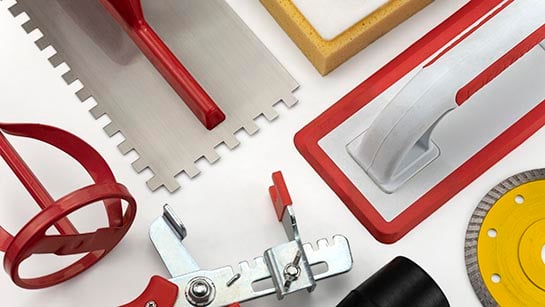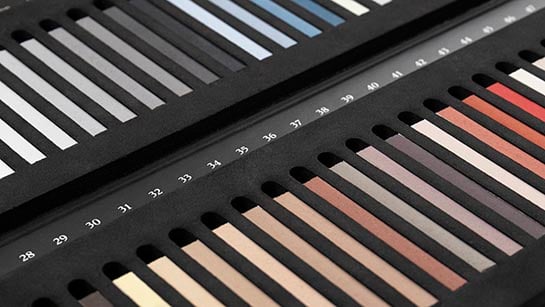SMALL TILE LAYOUT PATTERNS: TRENDS 2023
Small format tiles are highly demanded in interior design and architecture projects due to their great versatility and excellent technical performance. They are increasingly seen in bathrooms, kitchen backsplashes, trendy shops, and even residential and outdoor floors.
It may seem like a minor decision, but it has a big impact on the final look of a space. A rectangular tile installed in a straight layout doesn’t convey the same effect as a staggered one, nor is it the same to cover a wall with pieces of the same size as combining different shapes.
Either way, this trend has revived harmonious and forgotten laying schemes ideal for creating spaces with a traditional look by combining creative geometric patterns with small textured pieces.
Discover the layout patterns that are trending!
1 STRAIGHT LAY OR STACK BOND
This is the most common pattern but it remains trendy.
In this scheme, tiles are installed forming a perfect grid of vertical and horizontal lines perpendicular to each other. The pieces continue without interruption from other joints.
It’s a simple and clean pattern but at the same time offers a continuous and elegant look where the material is the true star.
Different types of patterns exist within this category:
- Horizontal straight lay: for rectangular tiles placed horizontally
- Vertical straight lay: for rectangular tiles placed vertically
- Square straight lay: for square tiles placed parallel to the floor
- Diamond square lay: for square tiles rotated 45°


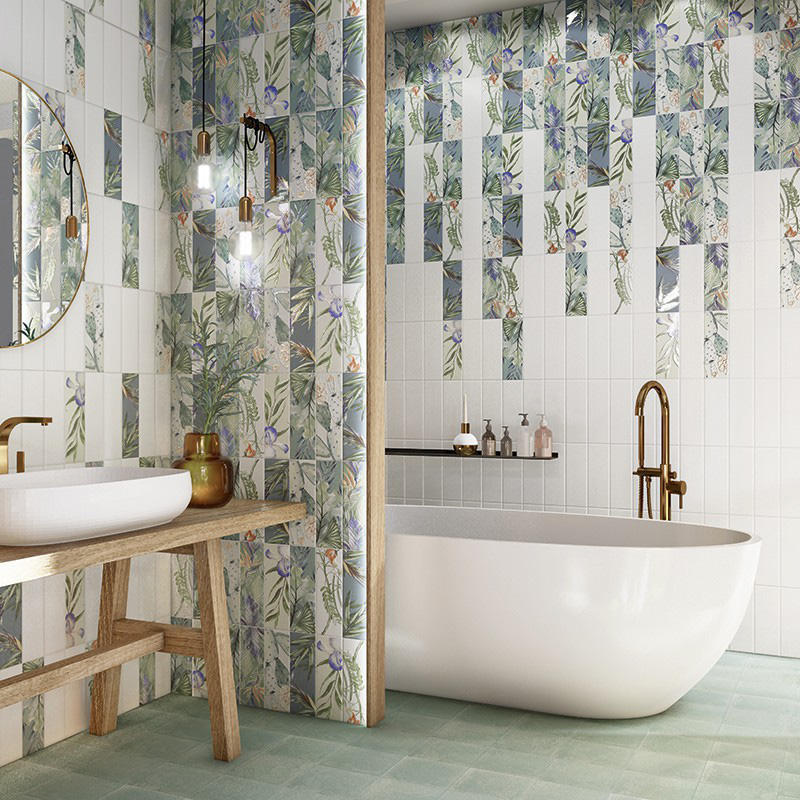
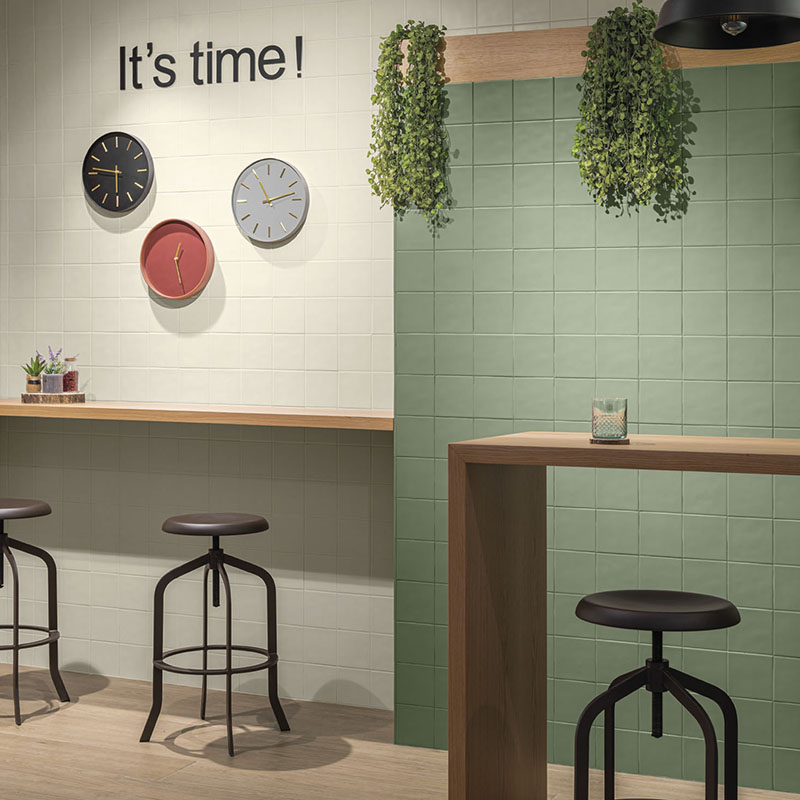
2 STAGGERED LAY OR RUNNING BOND
Staggered lay means the second row is offset relative to the first (whether rectangular tiles are vertical or horizontal).
Today, it is one of the most used and least risky patterns.
This type of laying gives a neutral look and does not overload the space even though the short joints are constantly interrupted.
It can be divided into several subtypes depending on how much the rows are offset. These are the most common:
- Half offset horizontal or vertical: suitable for both rectangular and square tiles
- Third offset horizontal or vertical: suitable for both rectangular and square tiles

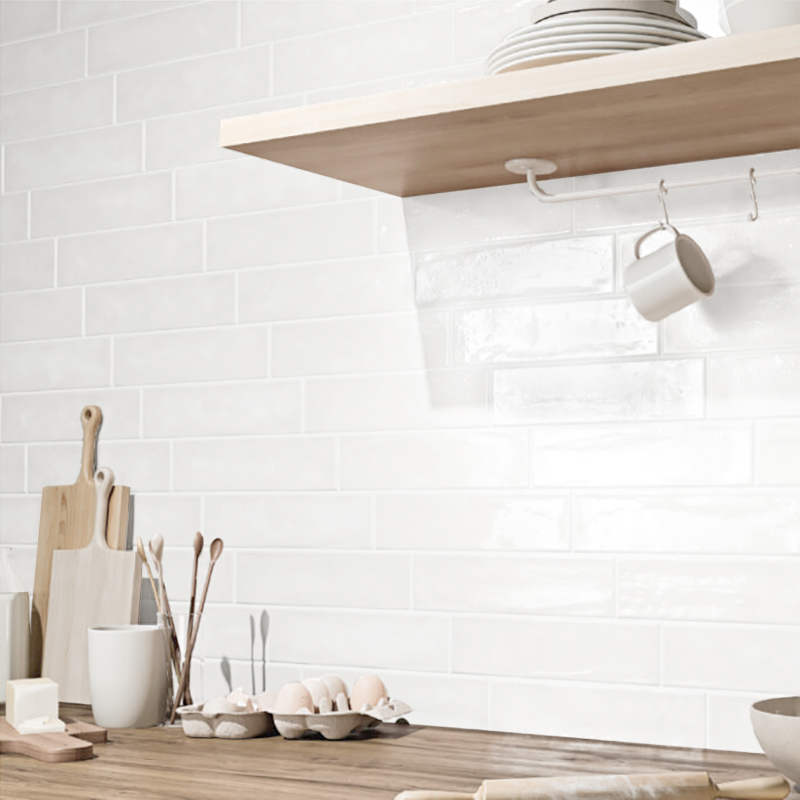
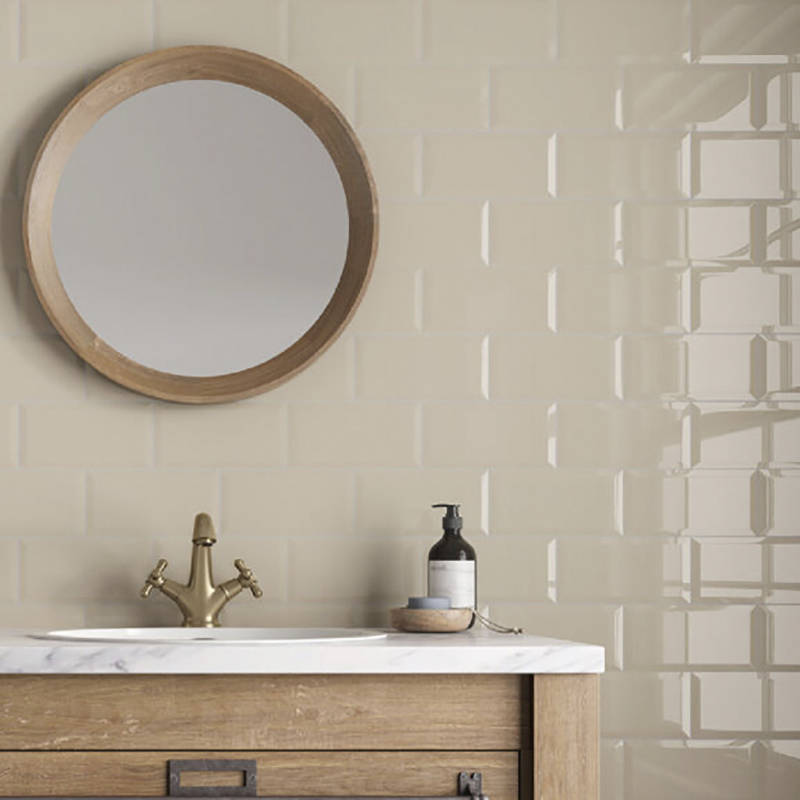
3 OFFSET HORIZONTAL OR VERTICAL LAY
In this lay, the short joints are interrupted, and tiles are offset and aligned with the center of tiles in the row above (unlike classic staggered that offsets by the long side). This asymmetrical lay gives a fresh and creative look to any room.

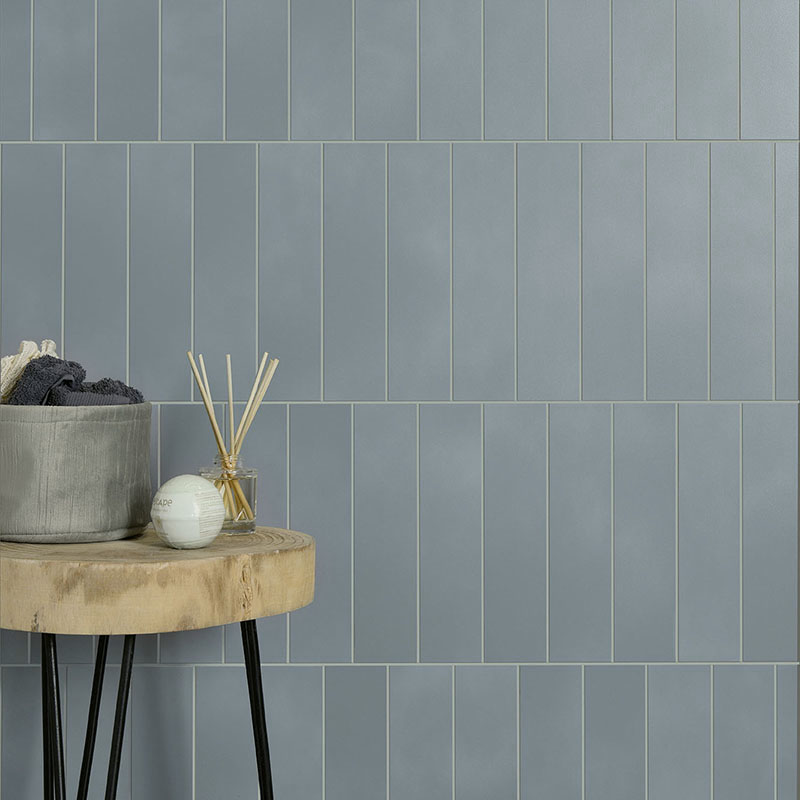
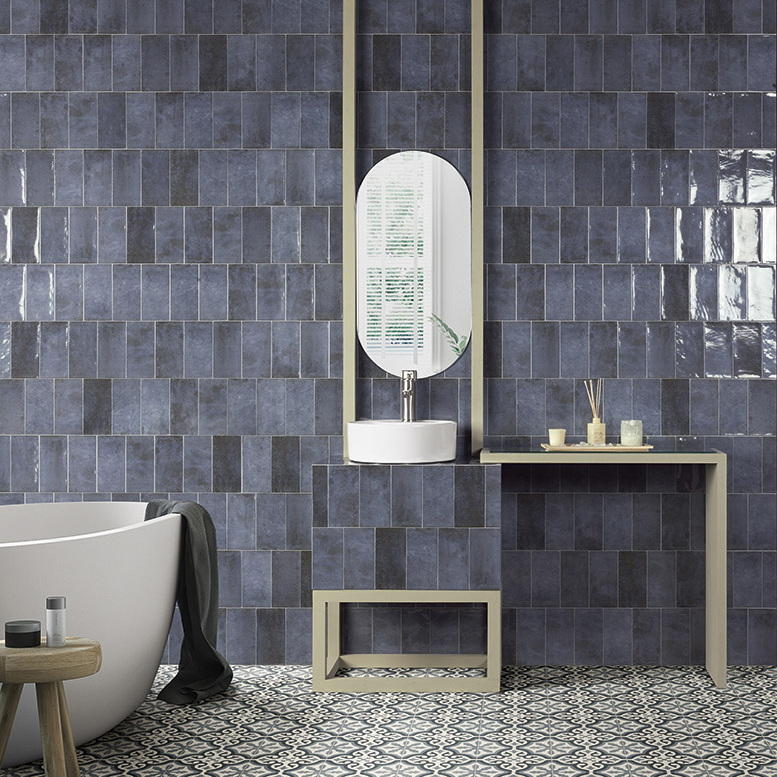
4 HERRINGBONE LAY
A very popular style: herringbone lay. It is obtained by interlocking rectangular pieces with harmonious proportions.
Whether horizontal, vertical, or diagonal, this lay gives an elegant and simple look creating a vibrant sense of volume.

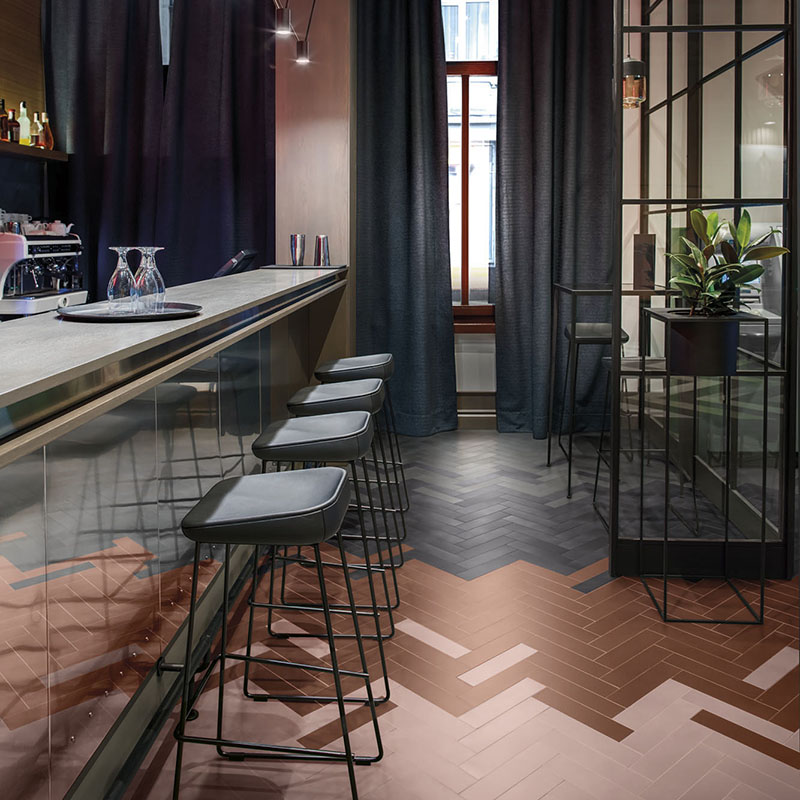

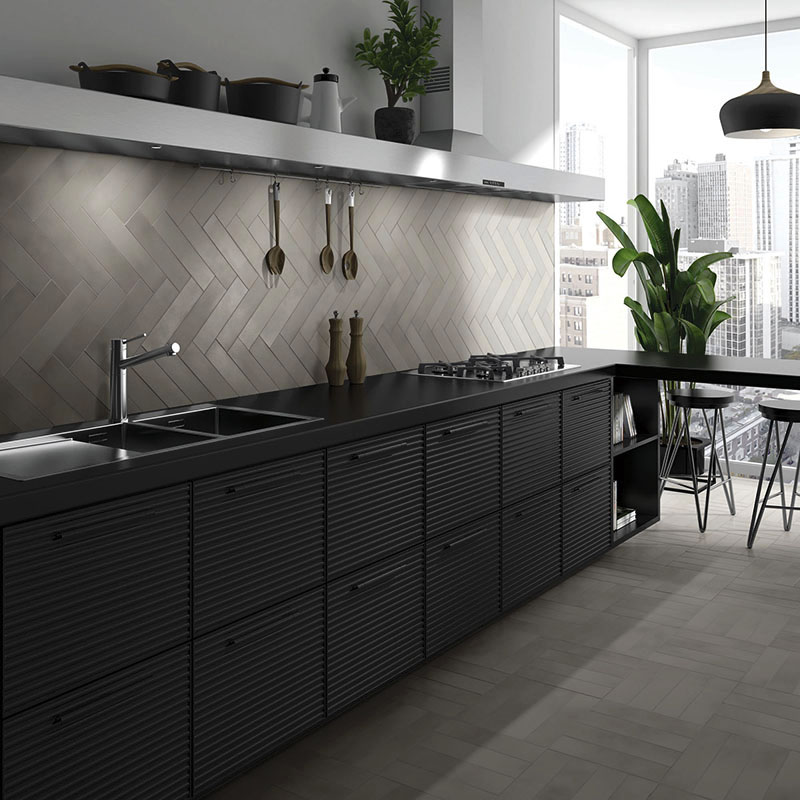
5 WOVEN, CROSS, OR CROSSHATCH LAY
A pattern formed by perpendicular lines, giving a bold and original finish. This scheme allows combining different pieces to compose various arrangements, as long as they keep proportional sizes.
The best known variants:
- Double or triple checkerboard lay
- Double offset woven lay: combines squares made of two rectangles with single rectangles
- Triple aligned woven lay: combines bands of vertical and horizontal rectangles

6 MIXING DIFFERENT SIZES AND PATTERNS
Finally, it’s possible to create patterns by combining pieces of different sizes that keep certain proportions, for example:
- Combination of squares and staggered rectangles
- Combination of simple squares and aligned double rectangles
- Combination of squares and octagons connected by corners
- Combination of squares and woven rectangles forming a swastika shape

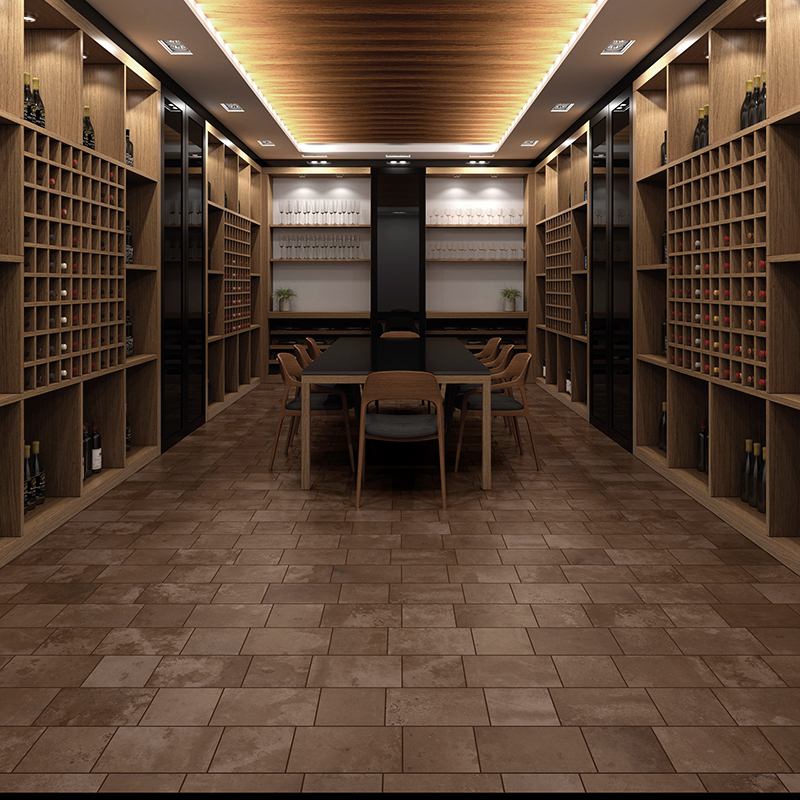
In any case, whatever your choice, keep in mind the lighting, room size, and laying rules to achieve an orderly and well-designed space: take care of the start and end of the pattern, the tile cuts on corners, floors, and ceilings, as well as the presence of niches or moldings and if tiles are smooth or textured.
Want more ideas? Discover the small tile collections at Ceramic Connection, where you’ll find perfectly suitable pieces for these trends and patterns.

































